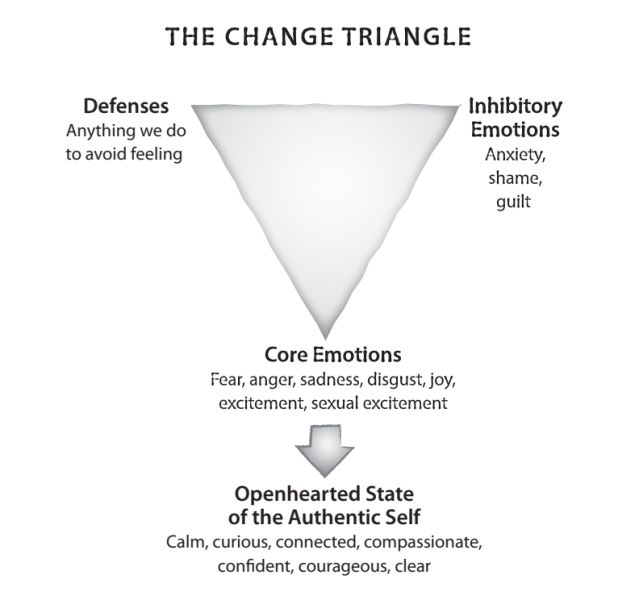KEY POINTS-
- We have defenses to protect us, but they also cost us.
- We need to use defenses flexibly and with moderation.
- Validating core emotions like anger, fear, and sadness helps lead a less defended life.
Mary picks fights with her husband at night so she doesn't have to deal with her anxiety around sexual intimacy. Looking for what’s wrong with her husband distracts from her discomfort and the feelings of vulnerability lurking under the surface. By not directly addressing her anxiety and/or not letting her husband know she is struggling, Mary misses an opportunity to be understood and feel more connected.
Social situations cause stress for Halley. She stays home instead of going out on weekends because she feels safe at home, but also lonely. Dealing directly with her fears opens up the possibility that she could soothe them and find alternative ways to engage with others that would feel less stressful and even satisfying.
Robert curses out people when he feels disrespected. Precious emotional energy is used up by his temper and sometimes he even feels ashamed after he overreacts. Instead of "acting out," he could get curious about his anger.
These are all examples of defensive behaviors: the brilliant and creative ways we avoid our emotions.
All of us use defenses to avoid emotions. In fact, defenses are developed for precisely that reason—to avoid painful feelings. Defenses are adaptations the mind makes to help us cope with vulnerabilities. While defenses serve a purpose, there is a cost to the protection they offer. To feel vital, connected, and authentic, we must move beyond our defenses.
Defenses can be healthy, sometimes problematic, or very problematic. A healthy defense is one in which we have choice and control. After a stressful day at work, we can choose to distract ourselves with a funny movie, for example. Medicating stress with a drug like alcohol is an example of a sometimes-problematic defense because it can become an unhealthy habit. A highly problematic defense is behaving in self-destructive ways, like cutting or addictions, that chronically hurt you and your relationships. Addressing core emotions like anger, fear, and sadness directly will help you lead a less defended life and one where your most authentic self feels safer to come forward. The Change Triangle tool for emotional health illustrates this well.

The great news is that we can shift from relating defensively to relating authentically by noticing when, how, and for what we are using our defenses. Once we become aware that we are avoiding something, we can ask ourselves what emotions might be underneath. Slowing down helps us notice what's happening in our body and brings attention to our emotional world.
When I notice I am defensive, defended, or just too up in my head, I ground myself by feeling the soles of my feet on the floor. Then I take four or five long, deep belly breaths. Sometimes I picture myself on the beach to deepen my relaxation. Feel free to try this. This is a great practice any time. And, it sets the stage for learning more about the emotions we are blocking.
Now more relaxed and slowed down, I ask myself, "What am I feeling?" Then without judging, I try to label all the emotions I notice. Maybe you notice a hopeless or sad feeling. Maybe you start to get in touch with parts of you that hold resentments or fears. Maybe you also notice a physical sensation like tension in your stomach. Whatever you find, accept it. If you don’t know what you feel, that's OK, too. Anxiety, guilt, shame, anger, sadness, fear, and excitement are the usual suspects. When I’m confused about what I am feeling, I run through each emotion one at a time. I ask myself, Am I sad? Am I angry? Am I anxious? Am I ashamed? etc. to see if any of those fit. Again, always validate what you find by reminding yourself that "feelings just are!" Validating emotions helps them calm down.
Congratulations for learning more about the relationship between your defenses and your emotions. You’ve already started working The Change Triangle to find better outlets for your frustrations and to start validating your emotions. With practice over a lifetime, you will more easily recognize the emotions that your defenses are obscuring. If you’re feeling really brave, maybe you’ll share your feelings, wants, and needs with someone you love. This is a major step to getting unstuck and creating positive change.
A+ for trying!


